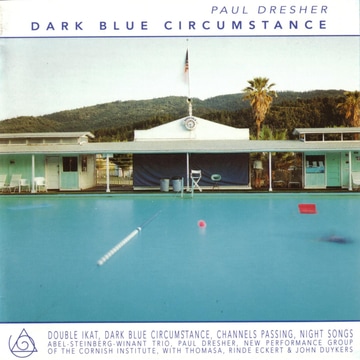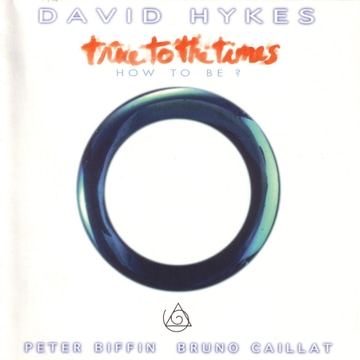|
Evensongs
Maia Quartet; Dunsmuir Piano Quartet The all too familiar hymns of my childhood have come back to haunt me ... --Ingram Marshall The music recorded herein ranges over a twelve year period; most of it is imbued with strains which will be recognizable to many. For me the research into memory is an important tool in my compositional workshop. We are, all of us, always searching our past in an attempt to understand the present. I think this is especially useful for the artist. The opening work, Entrada (At the River), is based on a fragment for string quartet, amplified with electronic delays, conceived in 1984; it is a process of gradually revealing itself. The Piano Quartet (In My Beginning is My End) originated as a trio (no viola) and was written for the then Dunsmuir Trio in 1986-87. It was commissioned by my longtime friend and supporter, David Rumsey. By the time this recording bacame a possibility, the Dunsmuir had become a quartet and Jennifer Culp, the cellist, an old and dear friend, suggested that my trio might be "improved" as a quartet. And it was. The revision was done in 1995. At the time of rewriting it I was reading Elliott's Four Quartets and the title seemed appropriate. The first movement has no conscious references in it; it was a spontaneous invention composed in rough form shortly after the birth of my son in 1986. The second movement, which might be considered a set of variations, dwells on two hymns, both quite well known. The string quartet, Evensongs, is really a collection of pieces, hymnodic meditations, concerning the crepuscular. Its six sections are bound together in two "movements." They were, mostly, written in 1991-92 in anticipation of a workshop collaboration with the Stuart Pimsler Dance Theater in Minneapolis. Working with a local string quartet, Stuart and Susanne Costello created a dance theater work around some of the music; it was called "Hymn of Two Embraces." Also involved in that collaboration was the sculptor Carol Parker, whose intensely personal work has always been an inspiration to me; to her we owed the idea of using in the performance the chorus of music boxes, which now appear in the string quartet at several points; the child's voice, heard in these tape collages, is that of my then five year old son, Clement. In several ways, this music is about childhood, or more specifically, is a reflection on the mirror of childhood one sees in one's own children. For those who think of me mainly as a composer of tape and/or electronic music, which is understandable in light of my discography, this music presents another side. Although there is some electronic processing in Entrada and a bit of tape collage interjection in Evensongs, this is "musica acustica." Yet, I like to think that my treatment of purely instrumental sound is not so different from that of taped and electronic sources. --Ingram Marshall Available here: iTunes Dark Blue Circumstance
the Abel-Steinberg-Winant Trio; New Performance Group of the Cornish Institute; Thomasa Eckert, Rinde Eckert, John Duykers His sound can be both lush and austere. But there's always a sense of pulse, evolution and destination in his music. --San Francisco Examiner The music on this recording was composed over a span of over ten years. During this time many friends' ideas, generosity, support and tolerance have had a profound affect upon my work and life. I particularly want to acknowledge and thank composer and teachers Lou Harrison and Robert Erickson, sitarist/teacher Nikhil Banerjee, and friends and colleagues Rinde Eckert, Jay Cloidt, John Duykers, Kay Norton, and my wife and producer Robin Kirck. "Dark Blue Circumstance" (1982-87), for electric guitar and live tape processing, is performed on an elaborate tape loop system which is an instrument which allows live multi-track recording, mixing, processing and immediate playback of any sounds produced by the performer(s). It was designed and built by Paul Tydelski and me in 1979 and consists of a 4 channel tape machine with 3 playback heads located at various points in the path of a single loop, the duration of which is variable by controlling the tape speed. Record/play functions and the mixing and routing of all sounds are controlled by the performer with an array of foot pedals and switches, thus leaving the performer's hands free to play their instrument without interruption. This instrument was my principal performing tool for most of the 1980s and was integral to many compositions, both for me as a soloist as well as for ensemble music and theater performances and purely tape compositions. The work arose while also composing the score for the music theater collaboration, 'are are', by the George Coates Performance Works of which I was a member at the time. --Paul Dresher Available here: iTunes True to the Times (How to Be?)
David Hykes, voice, windharp, organ, keyboard; Peter Biffin, dobro; Bruno Caillat, zarb, daff; Tony Lewis, tabla "True to the Times (How to Be?)" develops further the current phase of Harmonic Chant work (since 1991), which began with the album "Windhorse Riders". My aim now is to show Harmonic Chant as a unified field joining chant, mode, text and rhythm. The double focus of this album is on harmonic polyrhythms (just-intonation transposed into the realm of rhythm), and singing harmonic songs. The trio format is very inspiring, and, with collaborators like Peter Biffin and Bruno Caillat, seems to hold few limits. "True to the Times (How to Be?)". These times ask us to share a responsibility for which little data of a spiritual nature in our civilization has survived to prepare us. We are cut off from that level of harmony which, were we able to attune to it, might illuminate and guide us, with quite different results than those which we are now having to face. We don't see how to be. To see our whole world, we need a stable point of view toward all which is moving...turning, seasons, time. How to be? This windy life. What is behind all this movement? How to be? This is the drift of the title. The only way I can see of being true to the times is in trying to be true to deep self-questioning each day. Like an enigma which only deeper and deeper contemplation -- more and more real living -- can answer, or at least keep alive. Contemplation, being, reflection, pondering -- few of the inner endangered species in the inner nature of Man. Thinking it all over again, I would say that for me, today, the purpose of music still seems to be to help us find harmony within ourselves. In that effort we can hear differently the question of how to be face it more globally, and even, at some moments, find an eventual source of reply. The seeking is itself a kind of pilgrimage. My image of the pilgrim, who could at some moments be any one of us, is of someone constantly working...lost in work. One spark of that energy and the pilgrim can go on for days... or eventually forever, like the real Ones. Not just up and down, or back and forth, but ever onward. --David Hykes, first day of Spring, 1993 Available here: iTunes |
New Albion Records, Inc.Archives
October 2010
|



